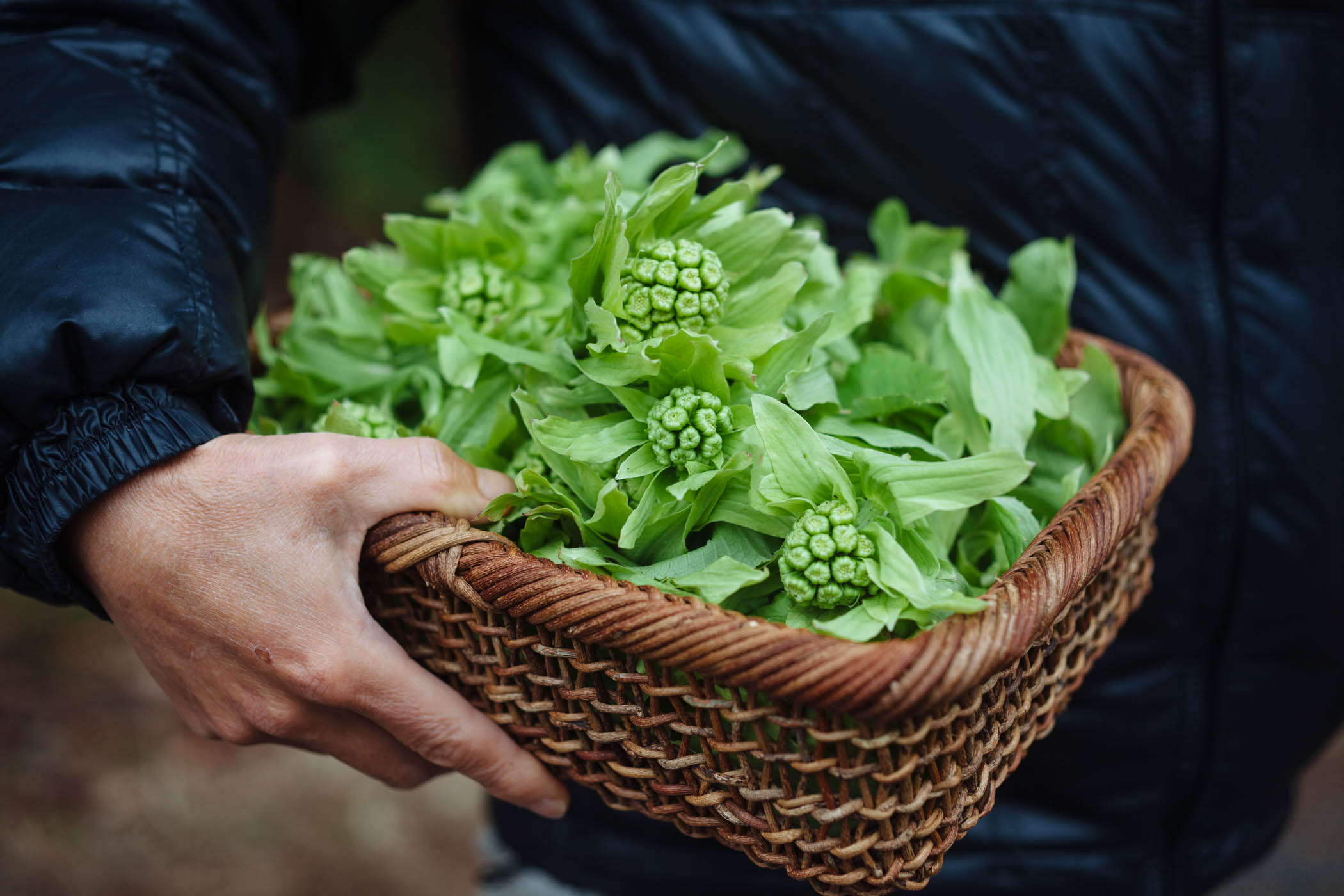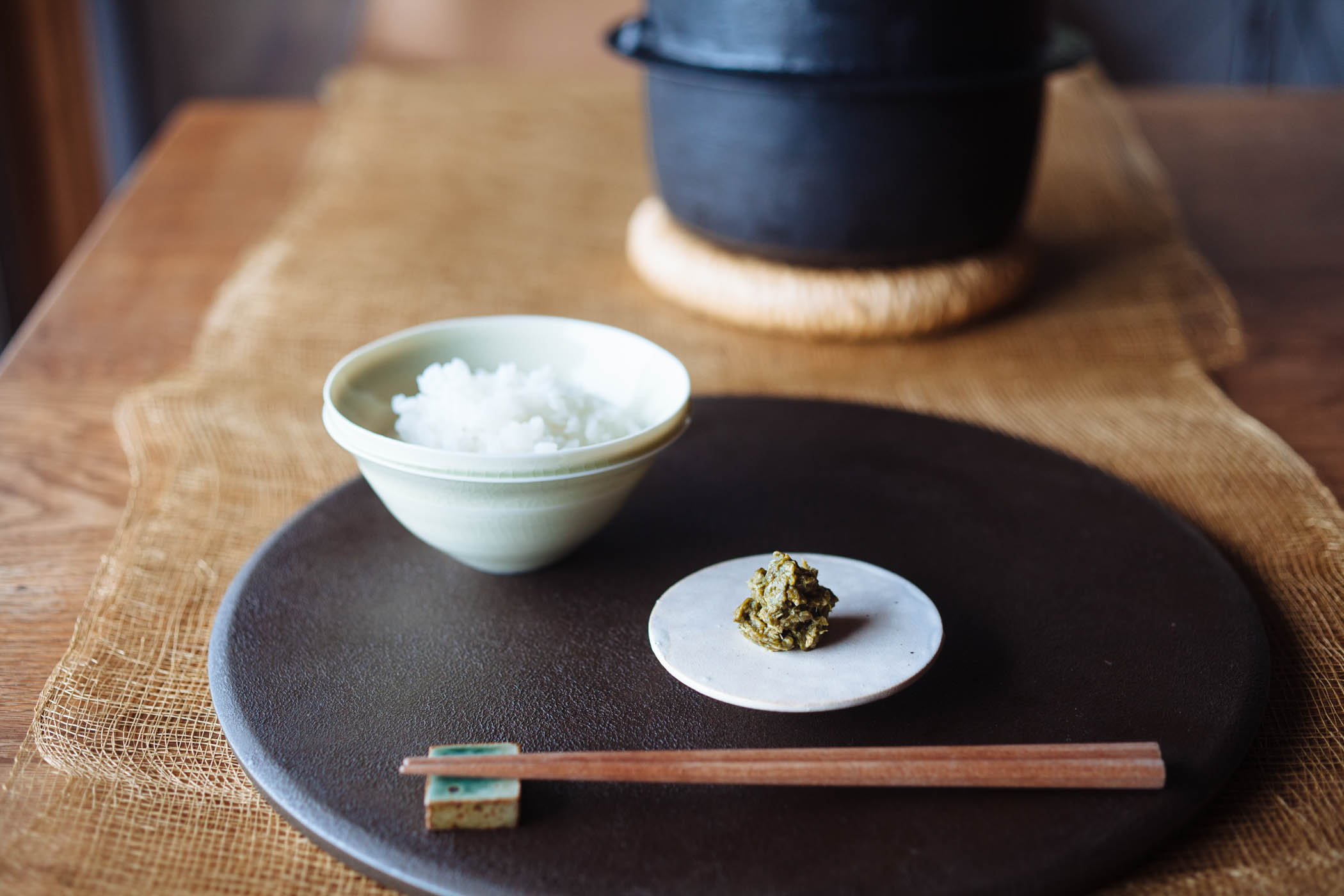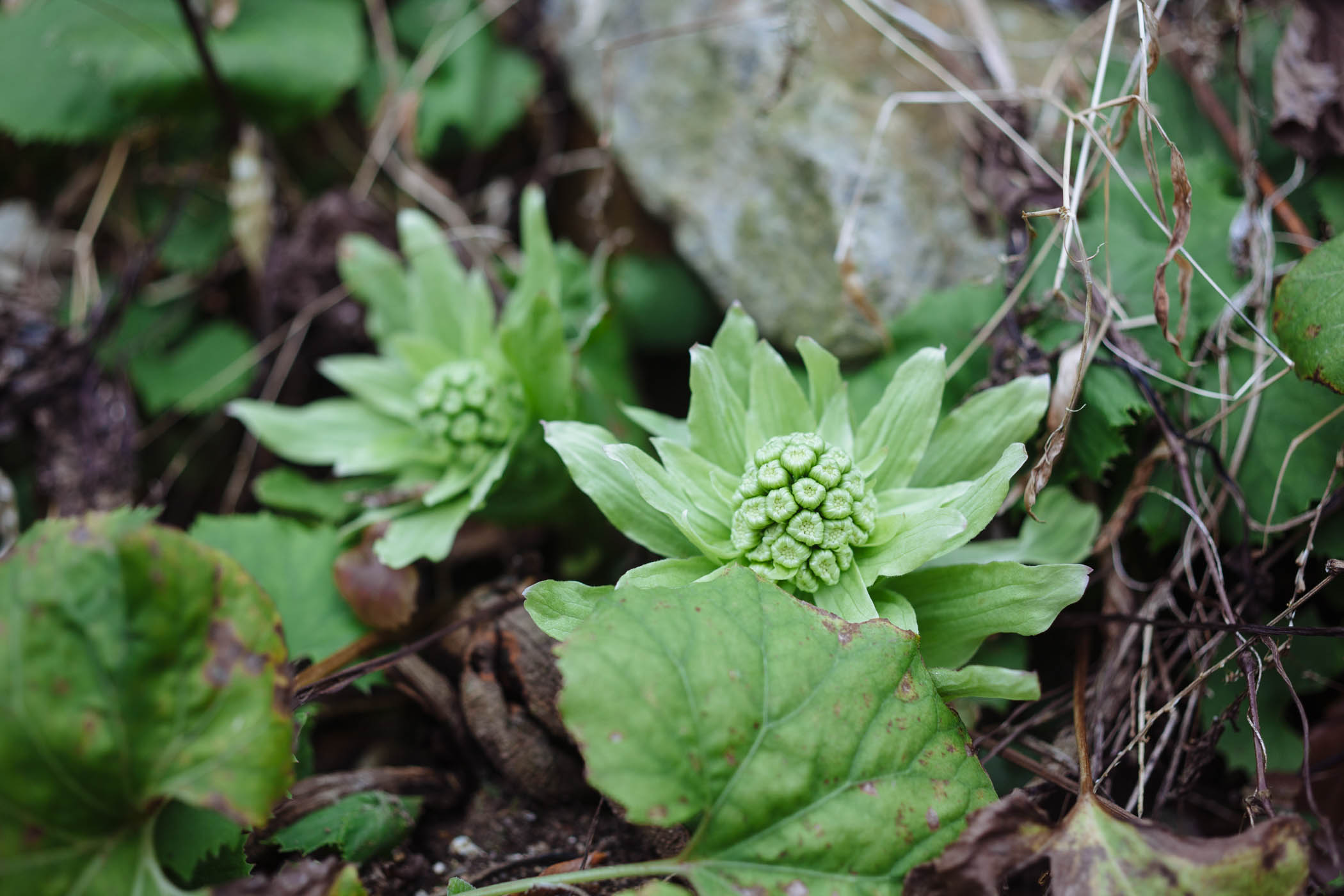The final days of foraging fukinoto

Strong night winds disturb the calm and through fitful sleep I hear rains begin in the dark of morning. I wake to a thick white curtain of mist that erases the view. Showers wash away the bland browns of winter. The soaked branches of the bud laden magnolia and delicate fingers of momiji maple flush, their umber hue a vision of renewed vigor. Mist drifts in and out and the inky outlines of undulating ridge lines in the distance scroll by.
On sunny days the pussy willows glisten, the fuzzy silver bullets so incredibly soft that I can’t help but stroke the branches each time I walk by. A troupe of mejiro, pear green songbirds with round white eyes, chatter as they flit among the ume blossoms drinking the nectar. This time of year feels much more like the start of something new than a cold and dark midwinter day. With renewal on display, spring elicits introspection. In it we glimpse a resurrection and in the face of so much newness and potential comes the chance to reflect on and revise those exalted resolutions we made in the dark of winter.
The short fukinoto season is drawing to a close and I visit the bank behind the blue storage house to see what remains. Unlike the shy buds we exalted two weeks ago, they now gape open with yellow tinged petals spread wide. The clusters of buds once demurely hidden protrude like a fat robin’s chest. Standing here with Kuniko a few years back, I turned to leave thinking they had all gone by and were no good. No, no, they’re still good, she insisted, wading into a thicket of tangled branches. We’ll use the best ones for tempura and then we’ll simmer the rest with soy and make tsukudani. Tsukudani, an intensely flavored condiment to eat with rice, is an excellent way to preserve an abundance of something and an equally good solution for ingredients that are beyond their prime. While I lazily searched for any tight buds that I might deep-fry one last time, Kuniko picked every last fukinoto she could find, emerging with her bag full and heavy.
Tsukudani was the first fukinoto dish I saw Kuniko make as I followed her into her kitchen after that initial forage all those years ago. I stood at the counter and watched as she blanched the buds and wrung them out. Though most would add mirin, a sweet sake, she had eliminated sweeteners from her kitchen years before at Takashi’s behest. She set the chopped buds in a pot and added her own holy trinity of seasoning, dashi, sake, and soy. She watched over them as they simmered, stirring occasionally with long saibashi, her plain wooden cooking chopsticks, until all the moisture had been incorporated. When I took my first bite of her salty, bitter fukinoto tsukudani the taste was deep and concentrated and striking in an entirely unfamiliar way. It was earthy and essential, reminiscent of the pleasant smell of warm wet dirt. These early, bitter, wild vegetables are believed to cleanse the body of toxins built up over winter and medicinal could partly describe the taste. It no longer seems prudent for Kuniko, now in her eighties, to traverse the rough slope where fukinoto grow so a week ago, at the peak of the season, I delivered over 100 buds to her kitchen. When she joined us for dinner that night she offered a precious jar of tsukudani in return.

Working in a studio just a few paces down the hill from home, we can go days without leaving Mirukashi. It can be hard to define a schedule and when work so often bleeds into the time we should reserve for rest or play, meals define the cadence of the day. They grant us a break from our labors and a temporary shift in focus. Sitting down to three home cooked meals each day is a rarity in these times. It’s an exceptional luxury and quite a responsibility. At times it can be withering to stand at the stove a few minutes before noon wondering how to make this midday meal a little different from the last. Sansai, these wild vegetables foraged in the mountains, are an antidote, their time with us so fleeting and precious that there is no joy lost in repetition. We happily incorporate them into meal after meal and the moments we carve out to gather them infuse the enduring task of preparing three meals a day with a certain delight. The chopped buds of fukinoto added to miso soup or a dollop of Kuniko’s tsukudani can turn the simplest lunch of rice and broth into a rare treat.
I gravitate towards the orthodox Japanese dishes I’ve learned from Kuniko. Hanako’s cooking often leans towards a fusion of Eastern and Western flavors. I sat down to lunch one day to a plate of blanched fukinoto mixed with olive oil and walnuts served over pasta. It was tasty but we got to thinking, wouldn’t the bitter bite of fukinoto benefit from the dulcet embrace of Parmesan? And we considered the texture. How about chopped finer or blended into a paste à la pesto? And what of the color, I wondered. Fukinoto swiftly oxidizes to a dirty brown. How could we preserve the bright green, the green of hope, the green of spring and new beginnings?
I wanted to try my hand at the adjustments we had considered so the next day at lunch I blanched the fukinoto and pureed them with olive oil, Parmesan, and walnuts. The cheese was a fine addition but it still seemed a dull shade and dry. I ruminated further and the following day I grabbed a lemon from our tree and soaked the blanched fukinoto in lemon juice before chopping them in an effort to prevent oxidation. I doubled the amount of olive oil and cheese to much better effect. Now this fukinoto pasta, our collaborative family recipe, has become a standard midday meal as the season peaks and wanes.
